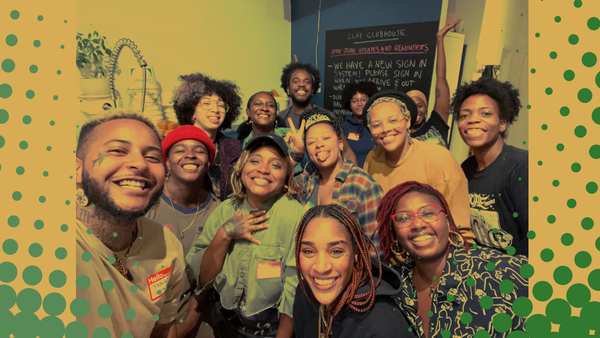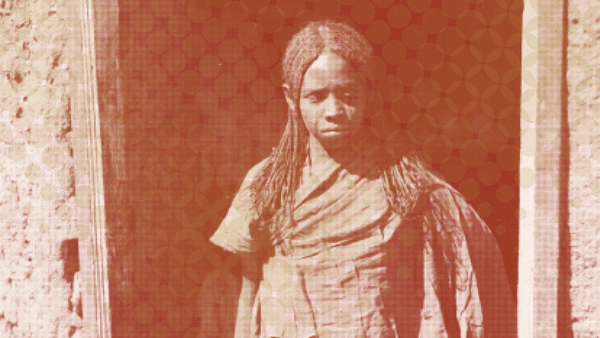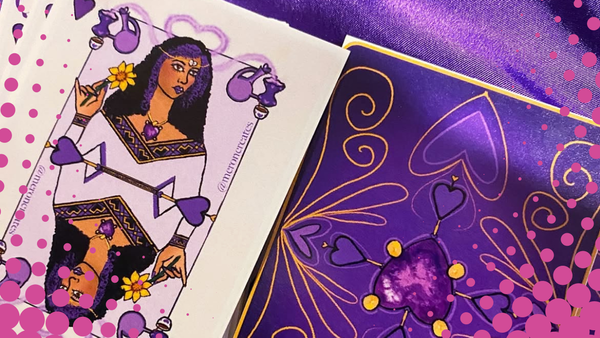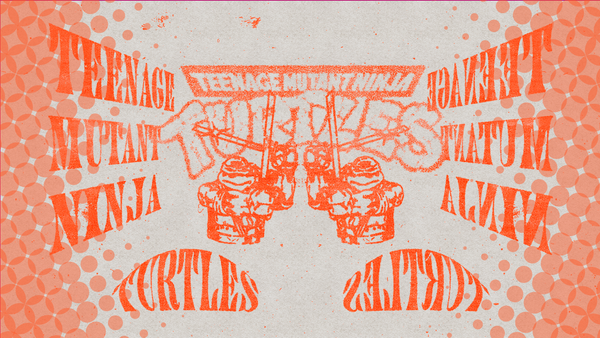Totoro, Tanks & the Theft of Wonder: Ghibli Aesthetics in the Age of AI
When nostalgia becomes a weapon, truth blurs. As AI-generated Ghibli-style imagery floods the political arena, we must ask: What happens when the visual language of peace is hijacked to launder state violence?
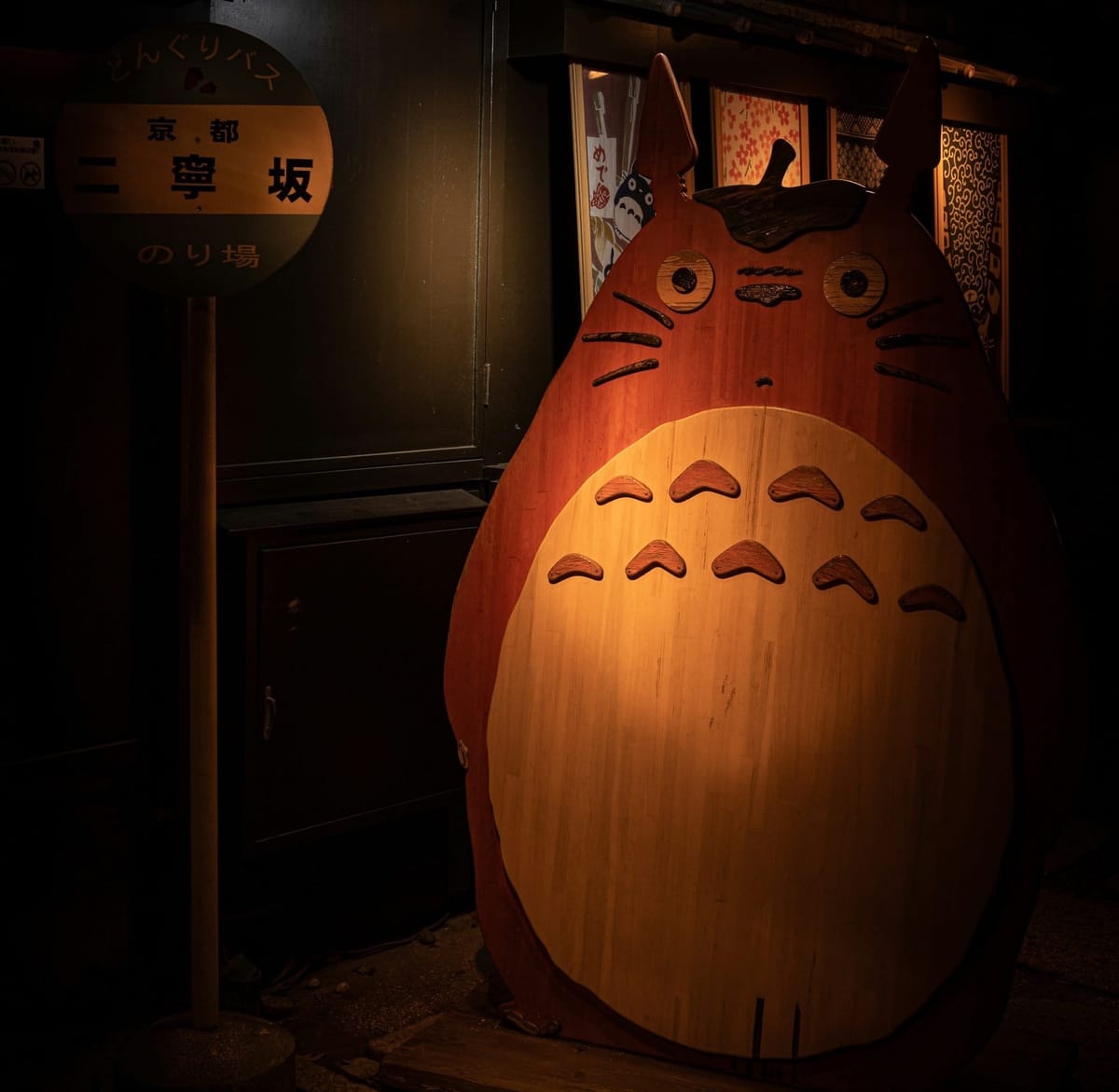
In authoritarian regimes, the control of information, education, and imagery is a cornerstone of power. But these tactics are not limited to autocracies or dictatorships. Democratically elected institutions have also embraced the aesthetics of persuasion—soft power wrapped in stylized imagery. What’s new is not the use of AI itself, but the widespread accessibility of generative AI tools, entering the propaganda arsenal: AI-generated imagery, capable of conjuring entire aesthetic narratives in seconds. What once took illustrators months now takes prompts and scraped data.
And so, it was only a matter of time before political actors—and their militaries—joined the meme cycle.
Trend Watch: From Meme to Military Messaging
A viral trend that began innocently—turning everyday photos into soft, anime-style “Studio Ghibli” illustrations using AI image generators—quickly took on political dimensions.
In March 2025, two political actors entered the aesthetic arena:
- The Israeli Occupation Forces (IOF) posted AI-generated images of soldiers and weapons rendered in Ghibli’s lush, dreamlike style.
- The White House released a cartoon of Virginia Basora-Gonzalez crying as she was arrested by ICE officials, stylized in the same aesthetic.
By April 2025, the aesthetic strategy evolved further. The official White House account shared a Ghibli-style AI-generated image of Vice President JD Vance, standing beside President Donald Trump, delivering a quote about deporting undocumented immigrants without bipartisan approval.
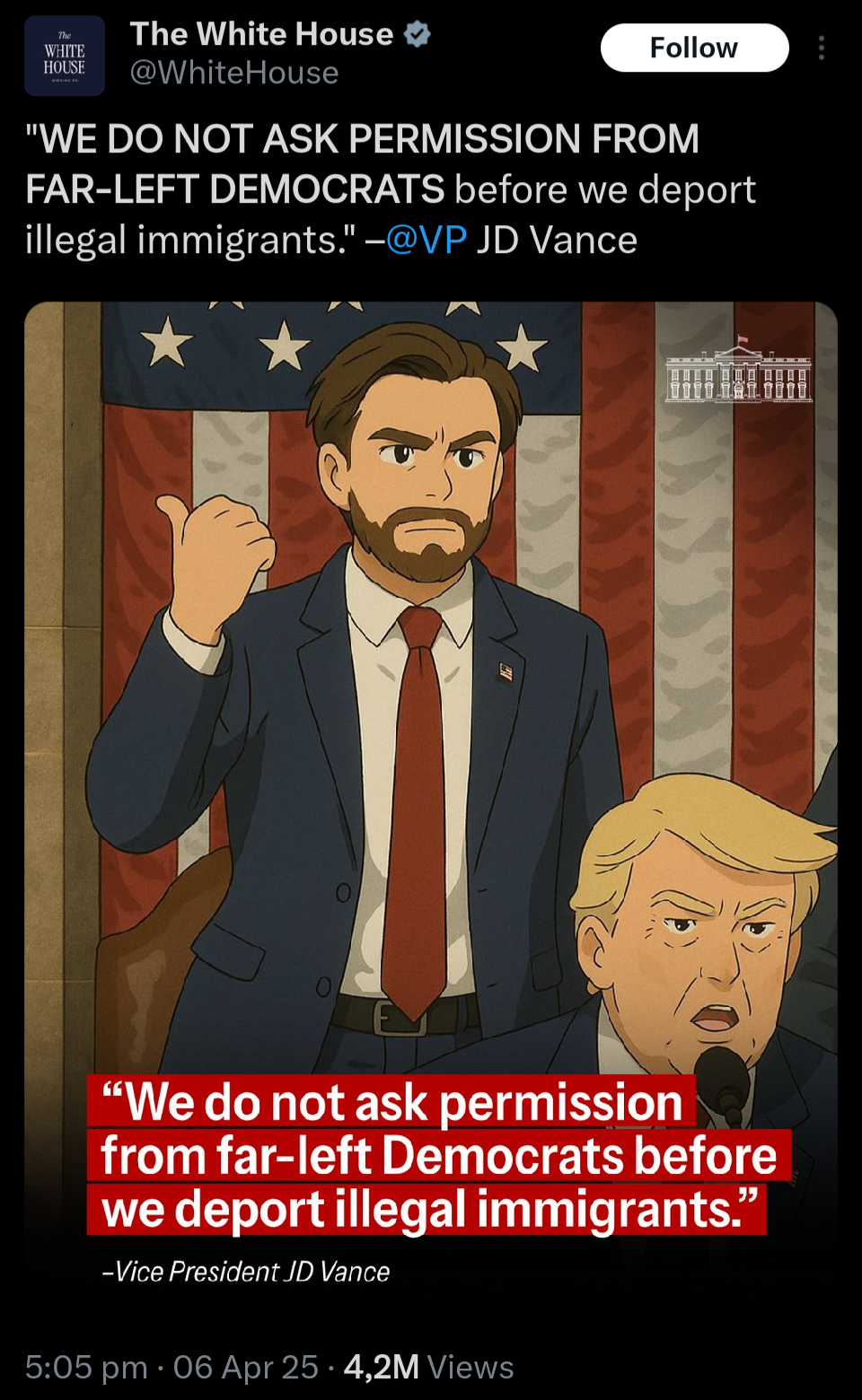
Unlike previous uses of the Ghibli aesthetic to veil violence, this tweet amplifies its message as emotionally resonant leadership. The gentle animation style reorients the viewer’s affective response, encouraging admiration. This is emotive mythmaking: the construction of heroism through softness and populist dominance rendered as animated destiny.
It signals a shift in tactic: from aesthetic camouflage to iconographic branding—a Ghibli-fied authoritarianism now fully visible, and no longer pretending otherwise.
Both uses—by the IOF and the U.S. administration—appropriate an art style globally celebrated for its pacifist, ecological, and humanist ethos. And both repurpose it to sanitize state violence and normalize carceral power.
Signal vs Noise: What Ghibliwashing Obscures
What we’re witnessing is not merely trend-chasing. It’s strategic, digital soft propaganda. When violent actors co-opt beloved visual styles to recast themselves in a gentler light, they’re engaging in a tactic we name Ghibliwashing.
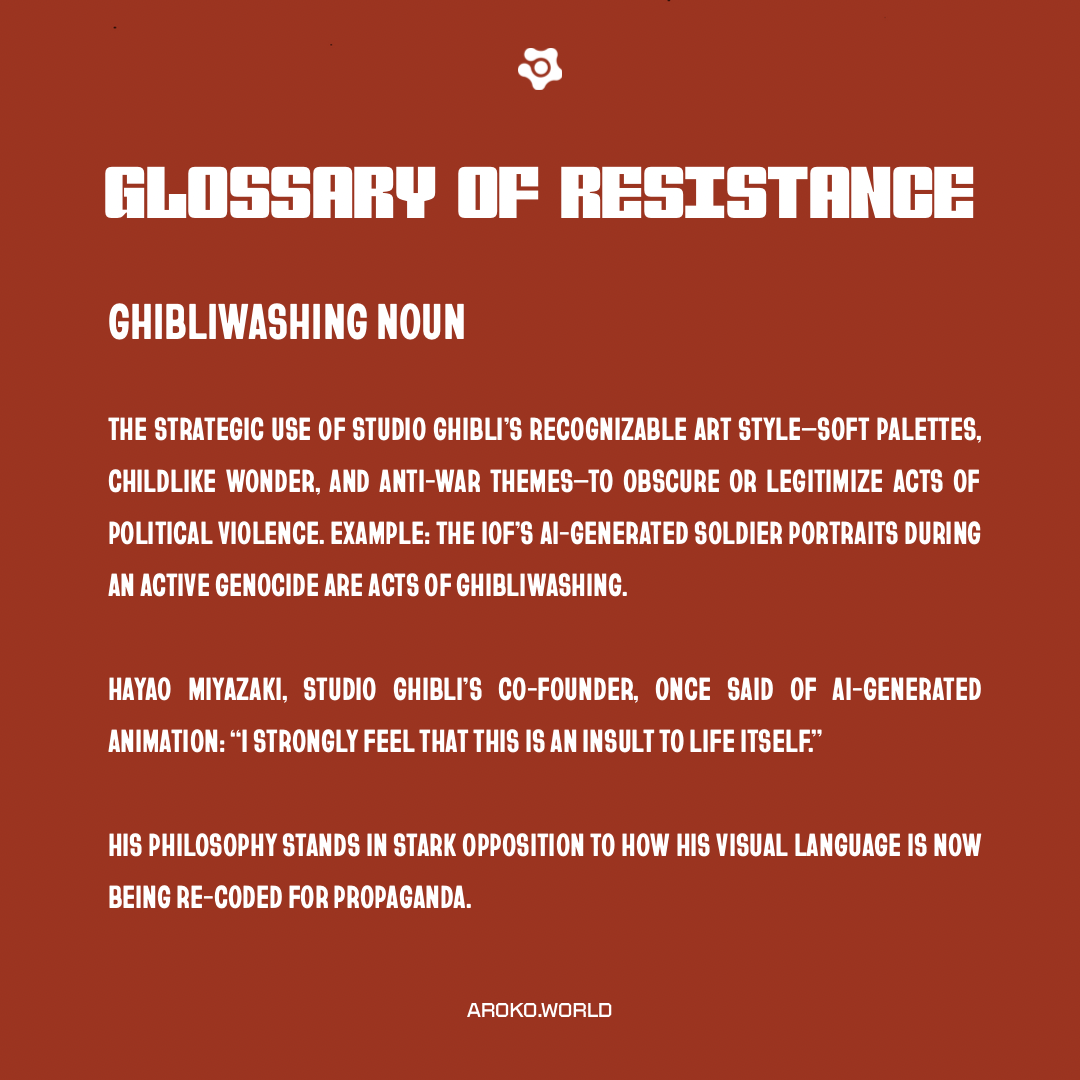
Ghibliwashing is when individuals or institutions borrow the anti-war, wonder-filled visual language of Studio Ghibli to conceal brutality. A military force mid-genocide casting itself as a whimsical protector. A deportation framed like a tragic anime subplot. It’s aesthetic deception.
The IOF’s pastel-tinged portraits of soldiers circulated at the height of its ongoing genocide in Gaza, where over 50,000 Palestinians have been killed. These AI-filtered images, posted under blue skies, were a tactical reframing to disarm critique, and make brutality look benevolent.
The White House’s illustration of a sobbing undocumented woman, intended to shame or deter, turned human suffering into memeable content. Grief was stylized and ridiculed. Black and Brown pain, once again, was instrumentalized.
Forensic Frame: Protagonist by Design
One of the most brazen instances of this tactic appeared on April 4, when a selfie surfaced of an Israeli soldier posing beside a blindfolded Palestinian civilian—his hands tied, his body curled on a stairwell. According to rights monitors, the man was used as a human shield. The original photograph was then rendered into a Ghibli-style AI illustration, transforming the hostage into a soft-edged figure within a golden-lit stairwell, the soldier’s uniform now stylized and sterile.
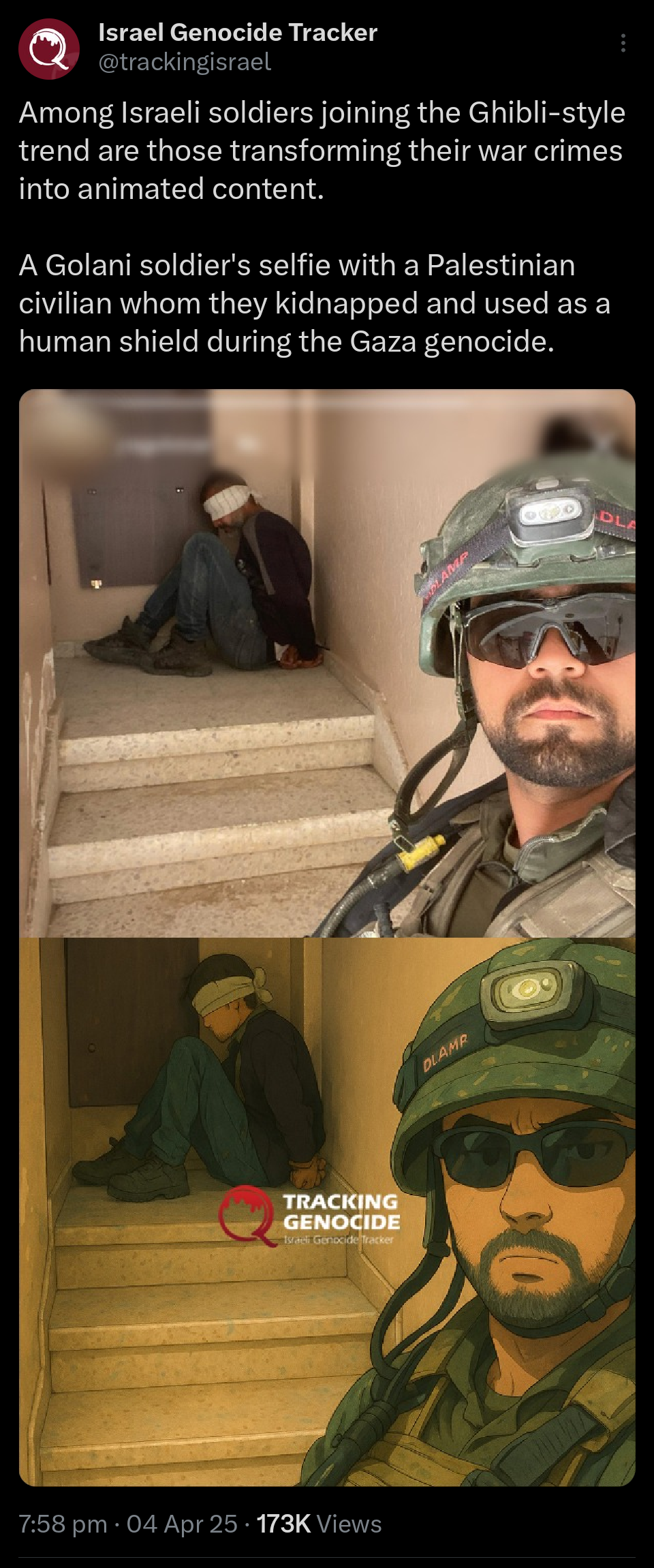
This is narrative revision. The AI model doesn’t merely redraw—it reassigns meaning. The bound civilian becomes part of the background—flattened into visual texture. The soldier is rendered as subject, centered, softened, made legible. Violence is reframed as protagonism.
When we say the occupier becomes the protagonist, we're pointing to how power is re-centered in the visual story. In narrative theory, the protagonist is the one whose emotions we follow, whose journey we are asked to empathize with. They are the figure through which we interpret the world. Even in silence, they shape the tone.
Here, the soldier appears calm, composed—like a heroic figure in a moment of tension. The Palestinian man’s suffering becomes set dressing, his presence reduced to emotional atmosphere. The AI’s soft lines, warm palette, and nostalgic framing offer not neutrality, but a kind of aesthetic absolution. The historical and political violence—the occupation, the genocide—is cropped out. What remains is a cinematic tableau. Atrocity rendered as ambience.
In doing so, it teaches us something about this moment: that propaganda no longer needs to shout. It only needs to feel familiar.
Counter-Spells: Reclaiming the Narrative
Resistance was immediate. Palestinian artists, anti-colonial designers, and digital activists responded not by rejecting the Ghibli aesthetic, but by reversing its spell: using the same soft, storybook palette to expose what propagandist narratives try to erase.
These images don’t aestheticize suffering. They interrupt forgetting:
- In one viral illustration, a mother and three children stand amid a bombed-out neighborhood, hands raised in terror as Israeli soldiers aim their weapons. The stylization is tender, but the horror is undiminished. It answers the IOF’s self-mythologizing with a simple, defiant truth: “This is what it looks like.”
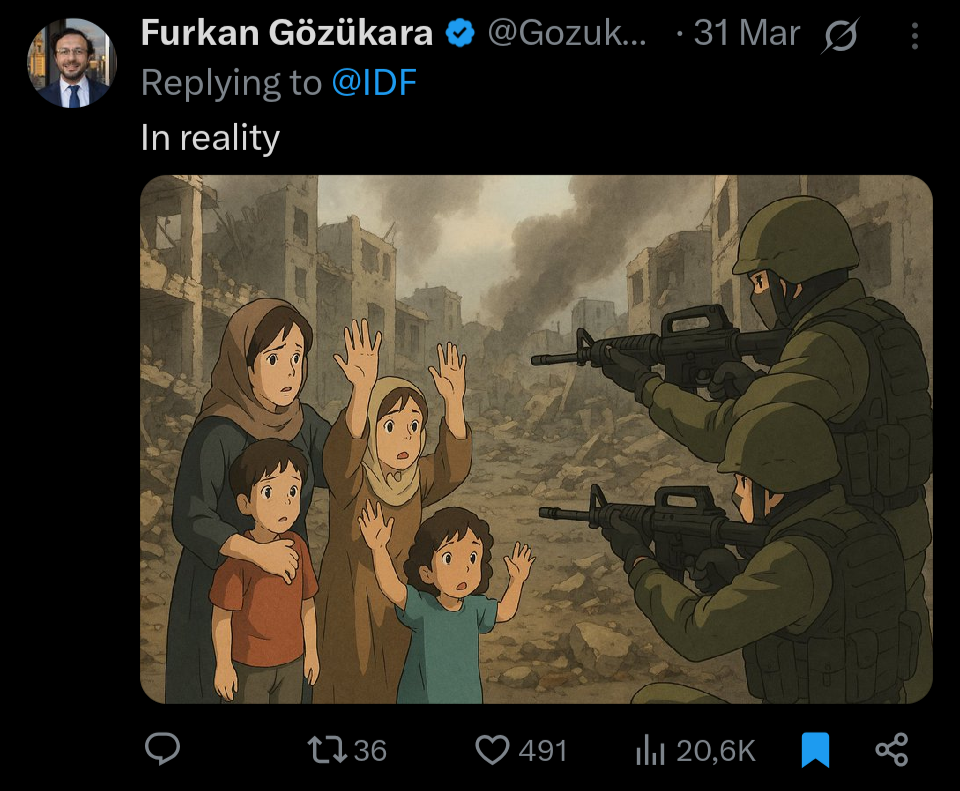
- Another shows a masked protester wrapped in a keffiyeh, holding the Palestinian flag high through clouds of tear gas. Soldiers surround him, but he stands upright as a figure of resistance. The Ghibli style, so often used to soften, here is reclaimed as a tool for defiance.
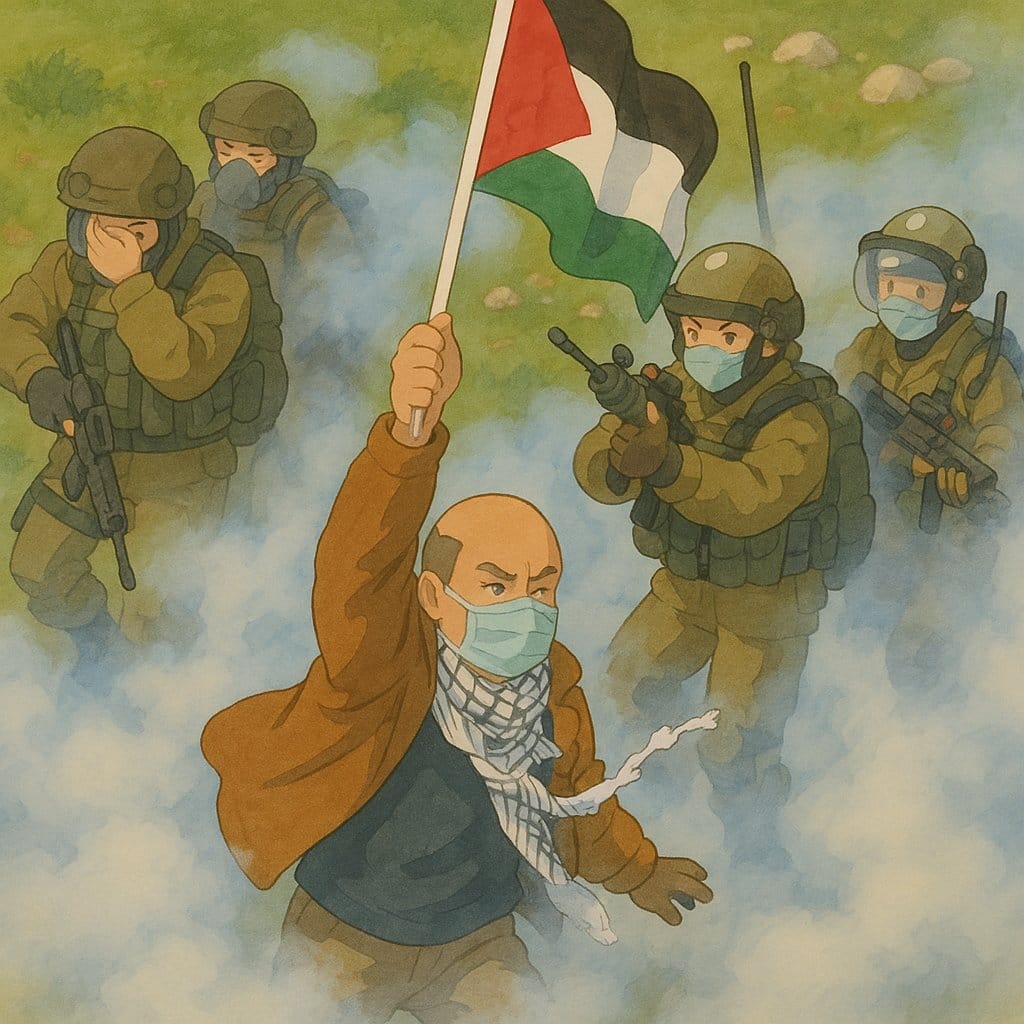
- In a third, a masked Palestinian commander addresses a press conference, the national flag behind him. AI’s brush has not softened him into caricature, instead, it renders him as a figure of seriousness with agency.
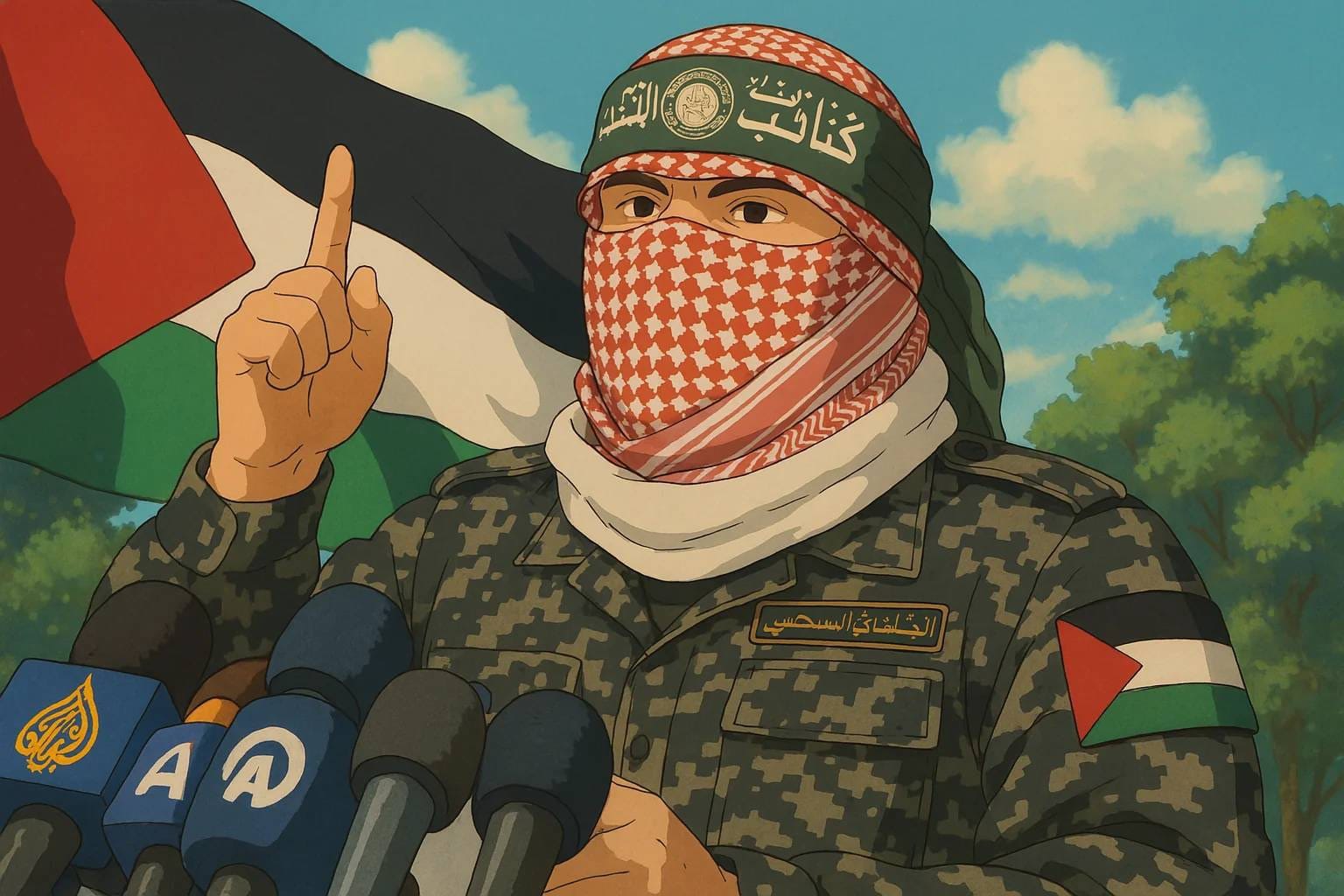
These are not aesthetic inversions. They are visual refusals. They challenge Ghibliwashing by using the same visual grammar to re-center grief, resistance, and narrative sovereignty.
Reimagine: What Would It Mean to Train an AI Not on Scraped Art, But on Consented Cultural Memory?
Today’s AI models are built on scraped datasets—billions of artifacts extracted without consent. Art, music, folklore, photography, ancestral stories—disassembled, stripped of context, and reassembled as content.
To train AI on consented cultural memory would mean refusing this logic of extraction. It asks:
- What if artists were asked before their work was used?
- What if elders chose which stories could be encoded—and which must remain oral?
- What if memory was a responsibility, not a resource?
This reorientation would require a shift away from profit toward ethics, accountability, and ancestral sovereignty. It would ask tech to move at the speed of trust.
Because not all knowledge is meant for machines.
Because not all memory can—or should—be flattened into code.
Closing Reflection
The memefication of politics and militaries remains understudied. But we are watching.
Because every image tells a story.
Some deceive.
Some reveal.
And some, when wielded with care, become instruments of truth.
Studio Ghibli has yet to respond to this growing trend. But as their visual language is scraped and weaponized, the ethical and legal implications—especially for platforms like OpenAI—are becoming impossible to ignore. The question of consent, attribution, and cultural misuse will only deepen. We will be tracking this closely.
At Àrokò, we believe that to name the tactic is to disarm it. That’s what this column is for.
See you next month.
In clarity, care, and collective resistance.
